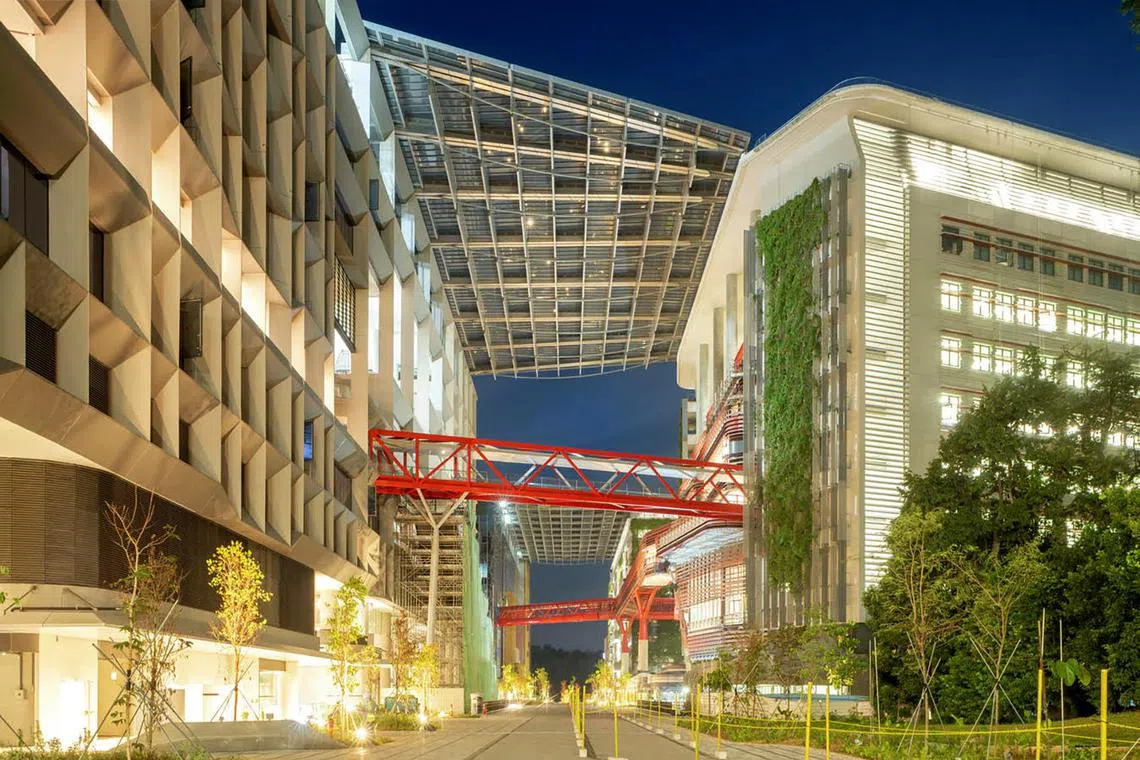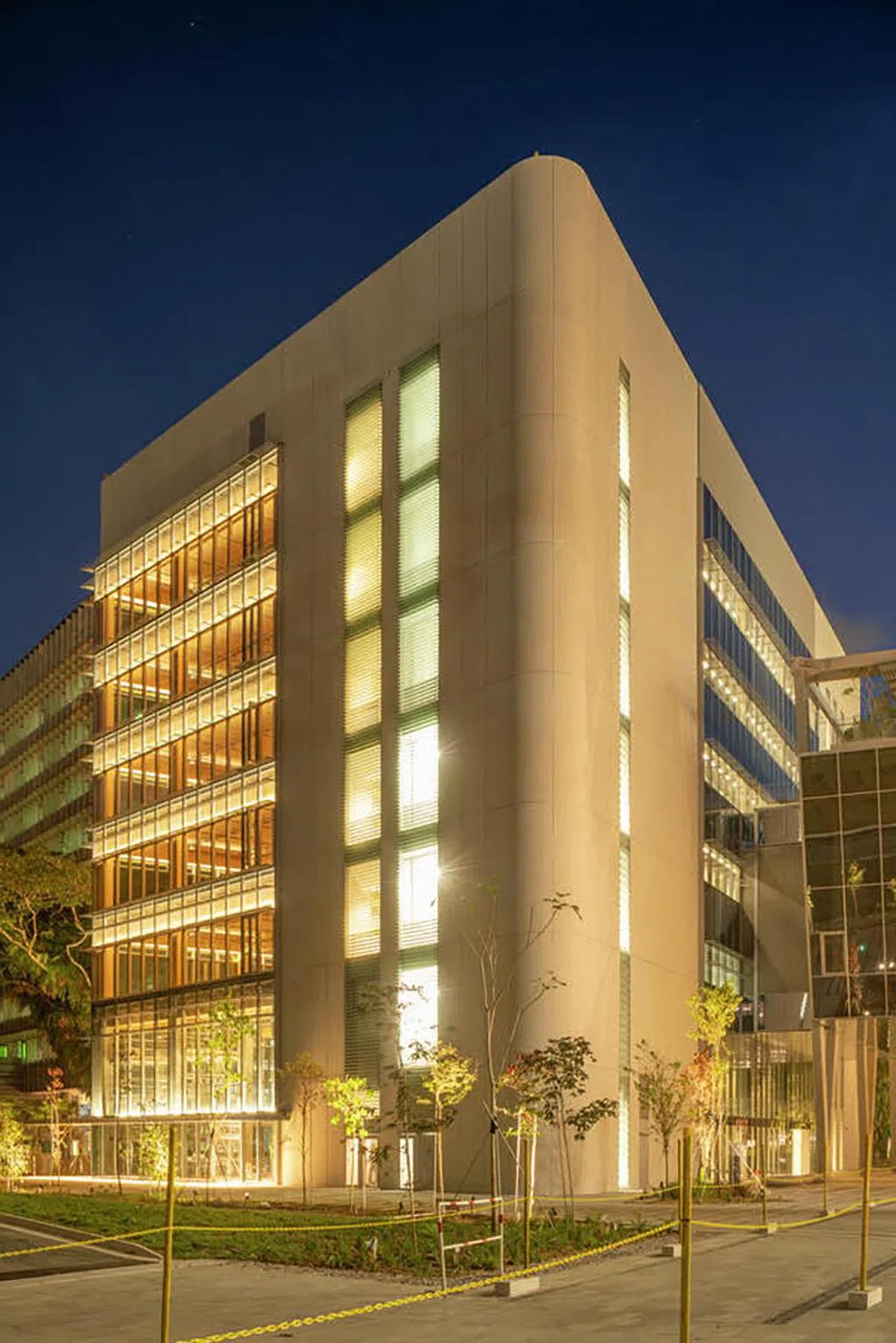JTC appoints consortium to build smart grid in Punggol Digital District
Sign up now: Get ST's newsletters delivered to your inbox

Solar panels will be installed on at least four of the eight buildings designated for the business park and mixed-use development in the district, including Tower 88 at 88 Punggol Way (left).
PHOTO: DARREN SOH FOR JTC
Follow topic:
SINGAPORE – Work on Singapore’s first district-level smart grid has made headway, with industrial developer JTC Corporation appointing a consortium to design, build and operate it in the Punggol Digital District (PDD).
The consortium comprises local electricity generator and retailer PacificLight Power and Univers, a global decarbonisation software company based here.
This smart grid can help Singapore tackle climate change by enhancing energy efficiency, incorporating renewable energy sources and improving overall grid resilience when it is completed in 2026.
A smart grid is an advanced electricity supply network that uses digital technology to detect and adjust to changes in energy use. It can integrate electricity drawn from renewable sources such as rooftop solar panels.
It will include a battery energy storage system (Bess) with solar panels to optimise energy efficiency across the district through real-time data management and generating renewable energy.
The Bess and the solar panels will be installed by PacificLight Power, which will also operate and maintain these equipment for the next 20 years.
A Bess captures and stores electrical energy
Mr Nelson Liew, group director of new estates at JTC, said that more than 1,000 solar panels will be installed and are estimated to produce 3,000 megawatt-hours of clean energy per year, equivalent to powering 680 four-room Housing Board flats for a year.
These solar panels will be installed on at least four of the eight buildings designated for the business park and mixed-use development in the district.

Tower 86 at 86 Punggol Way is one of the buildings in the digital district where solar panels will be installed.
PHOTO: DARREN SOH FOR JTC
PDD is also estimated to achieve a 35 per cent reduction in operational carbon emissions yearly, equivalent to taking 4,000 cars off the road, added Mr Liew.
To monitor and manage energy assets such as the Bess, solar panels and electric vehicle (EV) charging stations in real time within the district, Univers designed a device called a smart grid controller to help the entire grid work efficiently.
Acting as the brain of the entire system, the controller collects real-time data from energy assets and adjusts its energy supply, based on environmental conditions, usage patterns and energy market factors.
The smart grid will also be integrated with the district’s open digital platform that has already been developed, allowing for the exchange of data on buildings, EV charging stations and the district cooling system to optimise energy use and slash carbon emissions.
With better information on peak energy usage periods, this will pave the way for businesses to move their power consumption to off-peak hours, lessening the strain on the national grid.
This is important because Singapore is transitioning to cleaner energy sources. Solar energy, while renewable, is intermittent due to weather conditions such as cloud cover; and imported electricity can be potentially variable due to availability, market conditions and transmission constraints.

Mr Thomas Lim (right), deputy general manager of business development at PacificLight Power, gesturing to where the solar panels will be installed on Tower 86.
PHOTO: LIANHE ZAOBAO
PacificLight Power is now in discussion with the Energy Market Authority (EMA) to enable tenants in the district to participate in the authority’s existing Demand Response programme, said its deputy general manager of business development, Mr Thomas Lim.
The programme enables electricity customers to voluntarily reduce or shift their consumption at periods of high demand to other times of the day
Currently in the design phase, the smart grid is jointly developed by JTC, EMA and the Public Sector Science and Technology Policy and Plans Office under the Prime Minister’s Office.
While there are other smart grids in Singapore, such as Pulau Ubin’s microgrid
Mr Liew said the PDD smart grid project serves as a test bed for the technical and business feasibility of implementing on-site power generation and virtual power plants at a district level.
“There is potential for this to be scaled to other districts based on the test bed’s success,” he added.
The business park spaces and mixed-use buildings, occupying a total of 12ha, will be fully constructed by the first quarter of 2025, and tenants will start moving in from the middle of the year.
“PDD is a living lab where companies can test their systems in an operational business park setting. The smart grid not only generates, transmits and stores energy efficiently, but also serves as a platform for testing innovative solutions to advance our sustainability goals,” he added.

